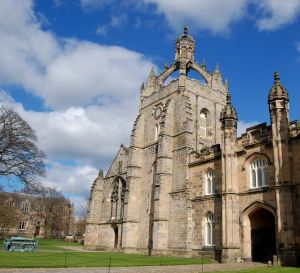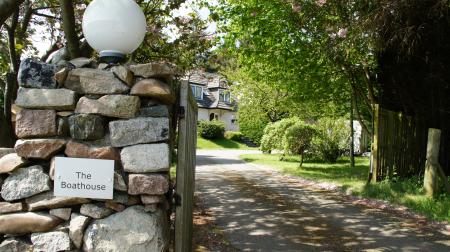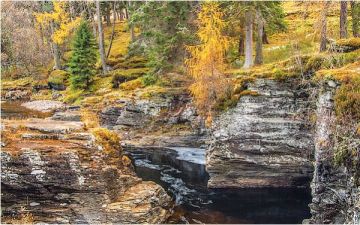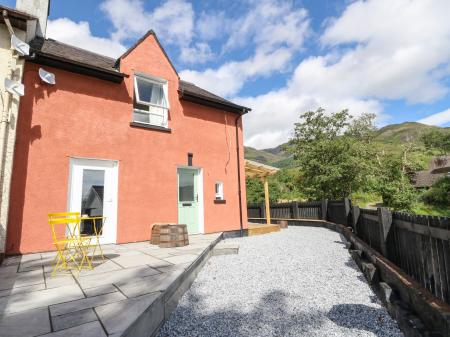
History
In 1495 William Elphinstone, 26th Bishop of Aberdeen, petitioned Pope Alexander VI to create a university to serve the north of Scotland. The papal bull was followed by a royal charter, and Bishop Elphinstone proceeded to establish a university based on the long-established University of Paris, where he had studied. The name King's College is a reminder that James IV was a supporter and patron of the university.
The Chapel
A chapel to serve the new university was begun in 1498 and was consecrated in 1509, at the same time as the university opened. The chapel's most striking feature is its imperial crown atop its tower. The original crown was destroyed in a storm in 1633, but the current crown copies the original as exactly as possible.
One point is easy to miss; the crown is not a royal one, but an Imperial one. The difference is that an Imperial crown evokes universal dominion rather than national authority. This rather pointedly supports the Scottish monarch's claims imperial authority within Scotland.
The real highlight, however, is inside, for the chapel retains its 52 medieval choir stalls and screen, which date to 1509. King's College Chapel has more medieval woodwork than any other church in Scotland. A later addition is the 1928 antechapel, which serves as a war memorial for former students who fell in both world wars.
The chapel is designed to emulate Solomon's Temple in Jerusalem. It seems quite possible that the rector, Alexander Galloway, helped design the building, as he was later responsible for the Greyfriars Church and the Bridge of Dee. The chapel was built of sandstone from Moray, brought at great expense by boat, rather than the local granite, which, though durable, was harder to work.
Two historic tombs stand in the chancel. One is that of Bishop Elphinston, the university founder and the other commemorates its first Principle, Hector Boece. A much larger and more ornate monument to Elphinstone stands outside the college.
The chapel is open daily for visitors and is a wonderful example of late medieval architecture. It remains one of Aberdeen's best-loved and most iconic buildings.
 We've 'tagged' this attraction information to help you find related historic attractions and learn more about major time periods mentioned.
We've 'tagged' this attraction information to help you find related historic attractions and learn more about major time periods mentioned.




